Guitar picks are one of the most important tools in our arsenal. Each has its own shape, style, appearance, and sound, and each of them lasts for a different amount of time. There are many different properties a pick has that determine how long it will last. Everything from material, to your playing style, has some sort of effect on your pick’s durability.
Some guitar picks wear very fast, and there’s nothing more annoying than hearing the dull sound of a worn-out pick. For me, personally, there is nothing worse than expecting one sound and hearing another. On the other hand, there are picks that just don’t wear at all. They will literally last forever. But is it a good thing?

Table of Contents
How Long Should A Pick Last?
When you play, you pick hit the strings and create friction. This friction is wearing both your pick and the strings. When you play a guitar pick that is so durable, it doesn’t “share” the wear with the strings. Meaning, your strings will wear a lot faster. There are some ways around it, such as beveling the pick in ways that allow it to glide easily across the strings by creating less friction (like speed bevels).
- Material – There are literally hundreds of different materials pick makers use to make guitar picks. Everything from
- Injection Process – In some materials, such as Nylon, the injection of the material into the mold contributes to the pick’s durability as much as the material itself. Most mass-produced picks (Jazz III, Dunlop 44P, and more) are a lot less durable compared to Rombo Picks and Attack Pik, which are made from the exact same material.
- The Tip’s Sharpness – This goes without saying, the sharper the tip, the faster it will wear and round.
- Thickness – The thicker the pick, the more it will last. On some designs, the tip is very sharp, and in that case you should know that the tip will still be sensitive to wearing even if the rest of the pick is 8mm thick.
- Playing Style – The more aggressive you’ll be in your playing, the faster your picks (and strings) will wear. The level of aggressivity of your playing can cause a very durable pick to wear very fast, and the other way around. A jazz III can last for years, while a highly durable Kirinite pick might start wearing after a month.
- Strings Gauge – The heavier your strings gauge is, the more they’ll “fight” the pick.
- The Shape Of The Tip – The sharper the tip of the pick is, the more fragile it is, and the more it will submit to being worn out by the strings. Speed bevels, for example, help a lot with extending a pick’s durability. A good example of that is Rock III, which is essentially a speed beveled Jazz III pick.
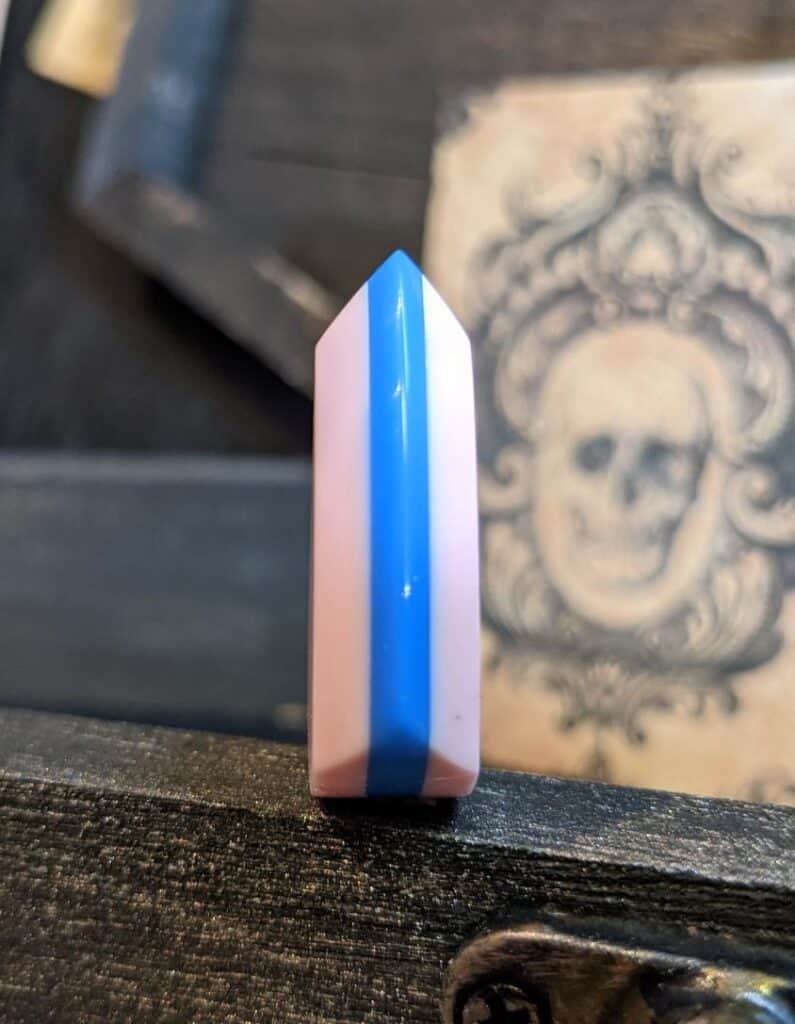
How Long Do Guitar Picks Last?
To answer this question we need to take everything into account. What’s the material you’re using? How aggressive are you? What’s the gauge of your picks and strings? How sharp is the tip of your pick? Depending on the answers to these questions, your pick can last anywhere between a few hours and a few months. Some picks can last a lot longer than that, even for years.
There are some rules of thumb though. Here are a few of the most common picks, together with their expected durability:
- Celluloid and common Nylon picks can last a few weeks, up to a month if you are playing gently.
- Ultem and Ultex are very durable and can last for a year.
- Acetal, Delrin, and Tortex picks can last between 1-3 months, could be a bit more if you are not too aggressive.
- Acrylic picks will last for 1-2 years, but partially because they are usually thicker, too.
- Slowly heated Nylon will last for a lot longer than regular Nylon picks, sometimes more than a year.
- Wooden picks can last anywhere between a few weeks to a few years. It depends on the species of the wood. The harder it is, the more it will last. You can always sand a wooden pick back into shape.
How Can I Make My Guitar Picks Last Longer?
- If you have a favorite pick and you want to keep using it, you can try to angle your pick when you play. This way it will resist the string a bit less, resulting in it lasting a bit longer.
- Playing more efficiently will help you get the same sound while using less power. This will help your picks to last longer, as well as with hand fatigue.
- Play softer. This goes without saying.
- If playing more efficiently or softer is not enough Rock’n’Roll for you, try the higher gauge version of the picks you already like. It won’t be exactly the same, but it might be close enough.
- If you’re willing to try out new picks, I’d highly recommend using a high durability pick. It can be made of any of the materials listed above, and tons of others. Most boutique guitar pick makers are designing their picks to last longer.
High Durability Picks
I’m a very soft player, using thin strings (0.0095). I barely wear my guitar picks, and yet, I’d much rather use a more durable pick than the cheap ones you can buy everywhere. I don’t buy them just for how durable they are, but it’s a side benefit worth mentioning.
If you’ll go over a few of the guitar pick reviews on this site, you are basically guaranteed to find a few good options. Some picks are superior in tone, some in durability, some picks make sure your hand posture is healthy, or any combination of these.
Durable Materials
As I’ve mentioned earlier, there are many different materials pick makers use. There are durable types of plastic, metals, stone, and even wood species that will exceed the life span of your average Celluloid, Delrin, or Nylon pick.
Plastics
- Acrylic picks: Very durable compared to other types of plastic, and are relatively similar in tone. Some notable makers of this type of picks are BHL, Dragon Picks, Honey Picks, Northern Ghost Picks, Plumstone Guitar Picks, and more.
- Thermosetting Plastic Picks: This is not material but a family of different materials used by makers to produce some of the most durable picks available today. Processing Thermosetting plastic (or: Thermoset) is very expensive compared to other types of plastic, such as Nylon. This makes these picks less affordable than others. A few makers working with these are Chicken Picks, Dragon’s Heart Picks, and Purple Plectrum.
- Kirinite Picks: Kirinite is a harder version of Acrylic. They share a lot of their tonal qualities but are a lot more durable. Examples for makers using Kirinite are Dragon Picks, Honey Picks, And Zen Picks.
- Polymide-imide Picks: The base material of choice of Dragon’s Heart Picks. It’s true that Polymide-imide is a thermosetting plastic, but being that durable deserves a category of it’s own.
- Slowly Injected Nylon – Injecting Nylon into a mold can be done in many different ways. The Nylon used for Jazz III is heated and injected very fast, making it very cheap, but a lot less durable. Other makers, such as Attak Pik and Rombo Picks, are taking a different approach. They are heating the Nylon a lot slower. It increases the cost but is making their picks last a lot longer.

AttakPik’s Stealth 
Rombo Pick’s Diamond 
Plumstone Guitar Pick’s Acrylic Picks 
Dragon Pick’s Toxic Green 
Honey Picks Hornet
Metals
Metal guitar picks are as durable as picks can be, but not all metals are equally tough. Copper, for example, can be bent quite easily with a firm grip. When talking about metal picks, people usually think of Dunlop’s Teckpicks, but there are a lot more options these days. Some makers worth mentioning are Isbey Custom Designs and Ohm Picks which are making picks out of Titanium, and T1 Picks, which are making picks out of stainless steel.

Stone
I have a special place in my heart for stone guitar picks. They sound warm even though they are as stiff as a material can be (some might say they’re hard as a rock – buh dum, tss). There are hundreds of types of stones used to make picks. Agate, Amethyst, Aventurine, Obsidian, Jade, Jasper, and Opal, to name a few. There are many stone guitar picks makers, including GypsyJazz Picks, SaludaPicks, StoneWorks Picks, and even Timber Tones have some in their collection.
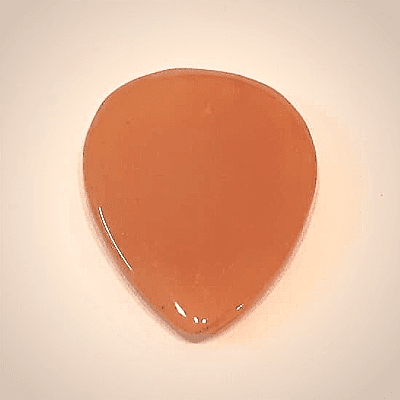
Wood
This might surprise you, but some wood types are so stiff that they can easily last a few years before they wear out. Some of them are African Blackwood, Black Ironwood, Cocobolo, Bloodwood, Brazillian Rosewood, Purpleheart, Bubinga, Padauk, Jarrah, and Zebrawood. There are many makers of wooden guitar picks, and some of them are GT Plectrums, TerraTone Picks, and TimberTone.

Other Durable Materials
- Carbon Fiber Picks: The most inflexible pick I’ve ever tried. It feels stiffer than using a Titanium pick, and it says a lot.
- Bone / Horn Picks: Bone and Horn are traditionally used for nuts and bridges for their durability and unique tone. So it was just logical to start using them for picks, too. They are very hard (and smelly) to work with, and yet, a lot of makers are using either Bone, Horn, or both to make guitar picks. These makers include Dugain Picks, Timber Tone, and many many more.
- Tagua Nut: The fruits of the Tagua Palm Tree. When dried, they are used as an alternative to Ivory (also called vegan Ivory). This is a very sustainable and durable material. Howling Monkey Picks are known for making guitar picks out of it.
- U Glass: A mix of Ultem and Glass. Not used by many makers, but this mix has the benefits of both highly durable plastic and glass. This pick will not break, nor will it bend.

Carbon Fiber pick by Timber Tones 
Horn Pick by Dugain 
Bone Pick by Dugain 
Tagua Nut guitar picks by Howling Monkey Picks
Finishing Thoughts
Guitar picks are an important part of your rig. But if you need a new pick every other day, you waste a lot of money on a pick that probably doesn’t fit the way you play. The more you explore other types, materials, and shapes of picks, the more different tones you’ll get to experiment with. Once you found your sound, you really want to keep that pick for as long as you can.
Let me know what you think in the comments below, and I’ll see you in the next post!

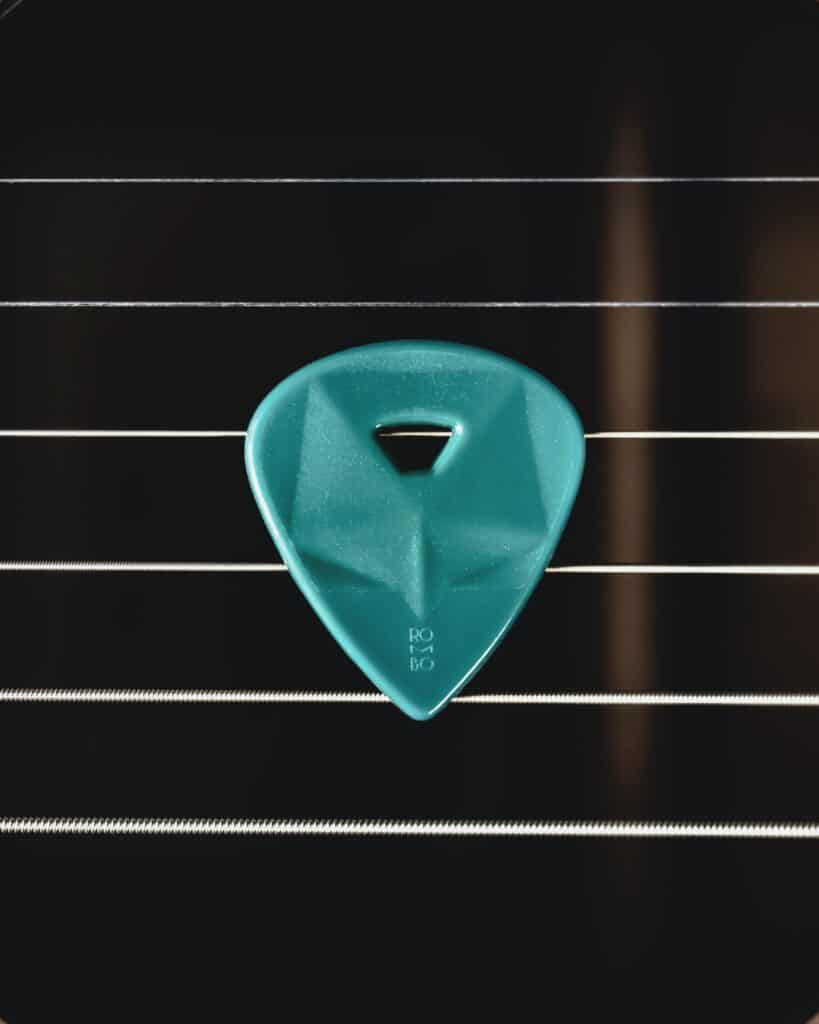
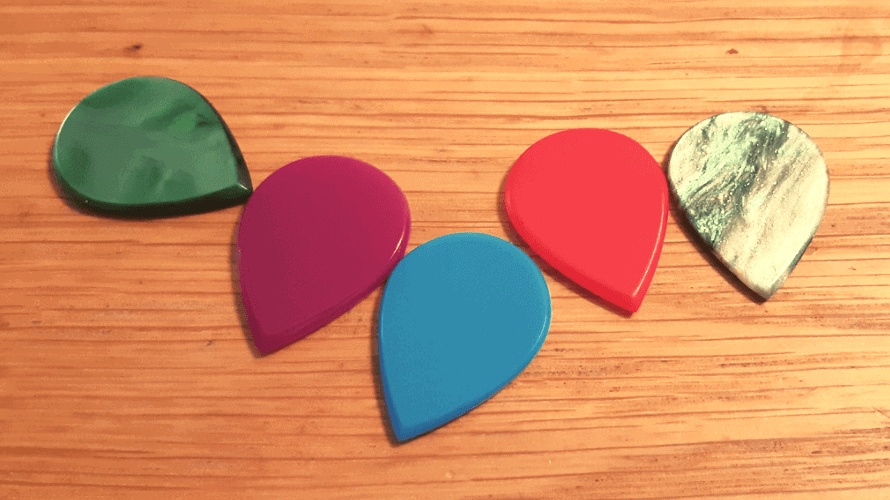
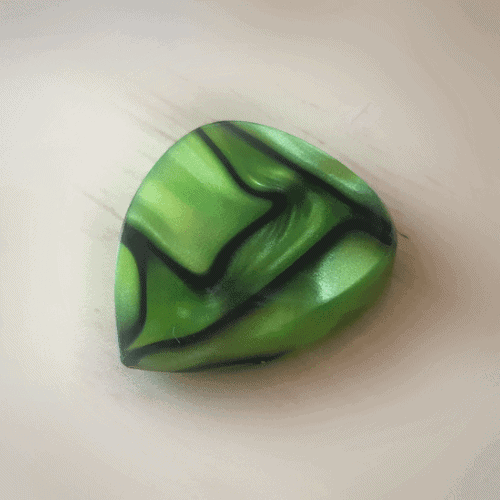
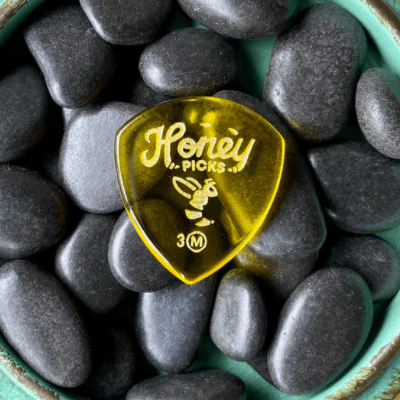
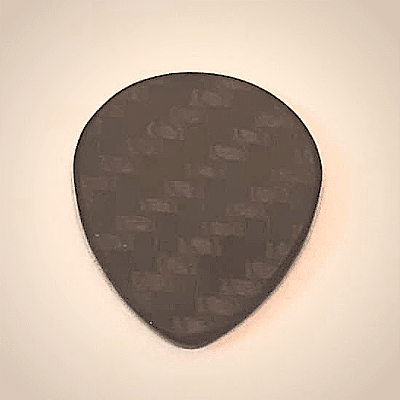
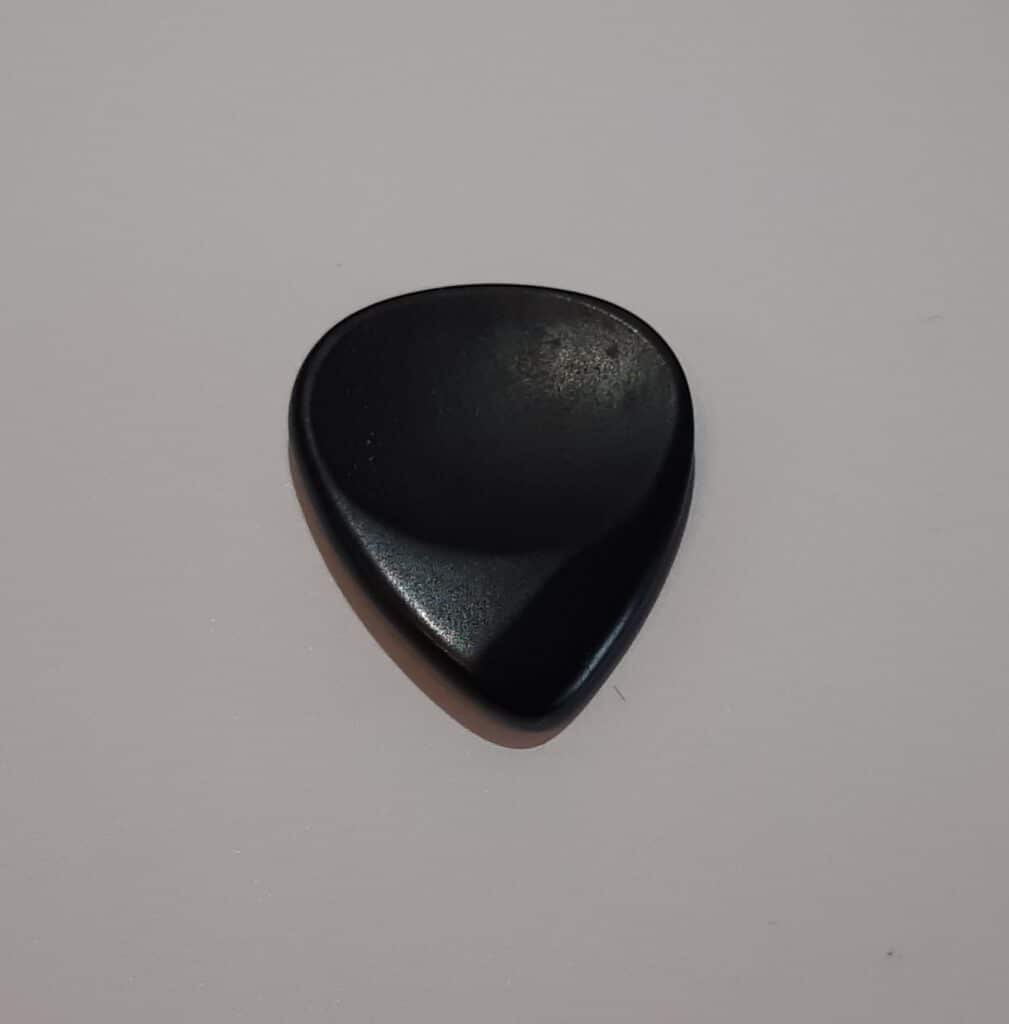
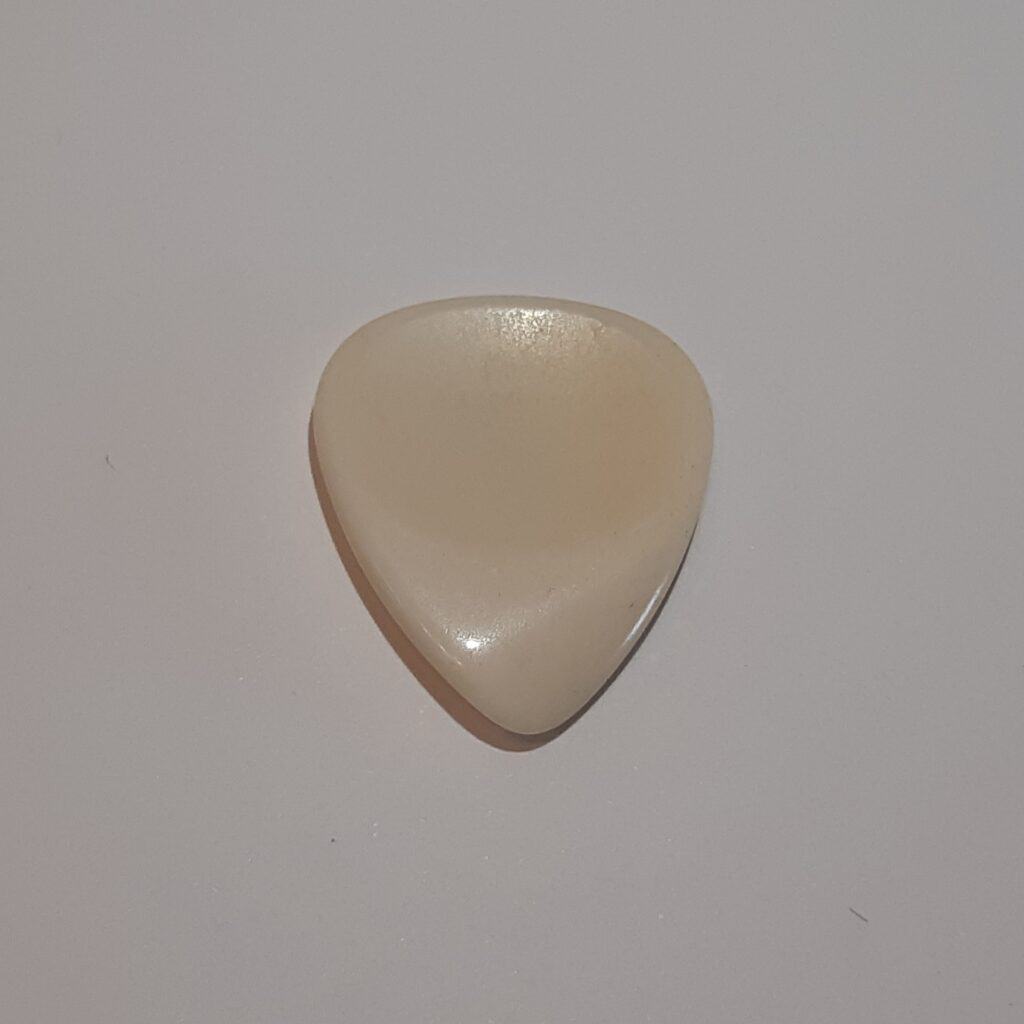
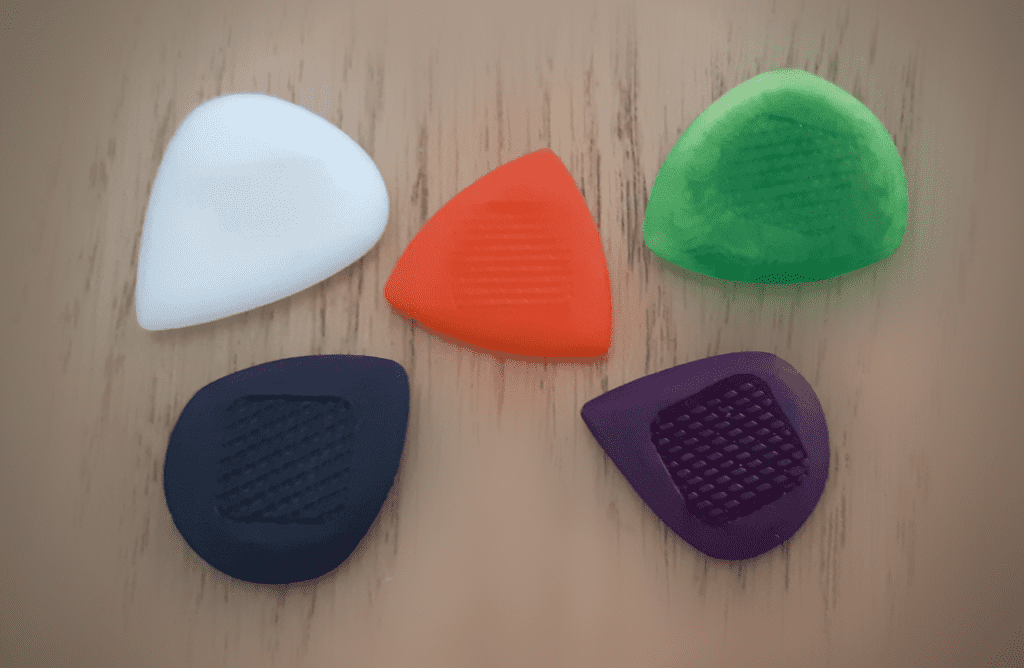
Aw, this was an exceptionally good post. I can see you spent some time and actual effort to produce a good article…
I disagree with the lifespan given to Duralin & Ultex picks.
I’ve got two of each; D’Addarrio Duralin .50mm & Dunlop(?) Ultex .50mm picks.
I play daily & sometimes pretty aggressively. A piece of the tip on one of the Ultex picks broke off after about a year; the other is still going strong.
I’ve only touched one of the Duralin picks because even after almost 2 years it’s still in great shape other than the tip being a little rounded off from being used so much.